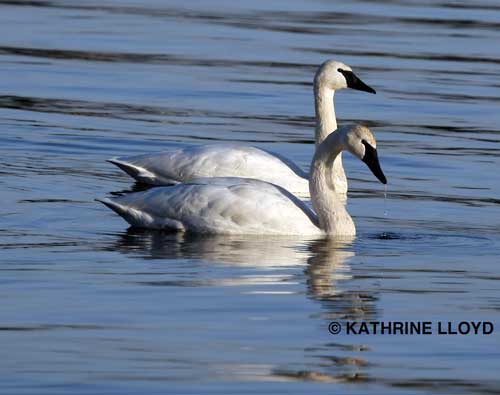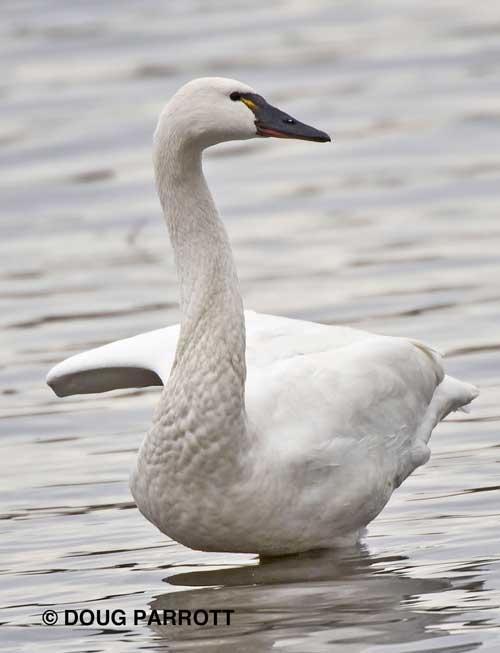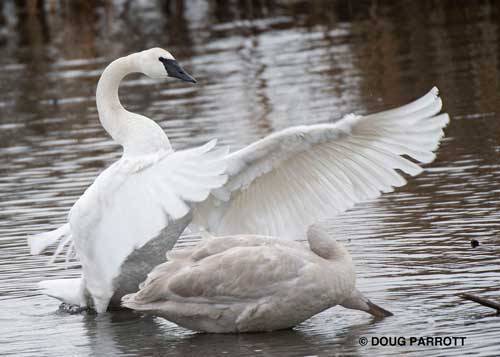Four years ago, heavy snows in December drove a flock of 11 Trumpeter Swans down from the Skagit, where they usually spend the winter eating leftover grain in farmer’s fields. Three of the swans were juveniles, easy to tell apart from the all-white adults because juvenile Trumpeters are gray.
The three babies spent the winter here in the waters of the Fill, always close together, frequently touching each other with their bills. Here they grew to adulthood, always together, often touching. We became their home.
When spring arrived, the three flew north to the tundra to look for mates. We human fans were sad to see them go, but as all good parents must, we told ourselves it was for the best. Babies have to leave the nest if they are ever to grow up properly, and ours — while still so very young and untried — were ready to fly.
The next winter, “our” swans came back, now snow-white but still close-knit, touching each other often. Once again, they spent the winter here at home with us, and once again, they flew north when the call of spring told them it was time. Last winter, I began to look for them again, hoping they had survived, hoping they would return. On January 1, 2011, two swans flew overhead and landed gracefully in Waterlily Cove. Before I could shout with joy, four more winged in. “Our” swans were back, and they had brought their spouses! We enjoyed the pleasure of their company all winter long before spring arrived and they left to breed.
This year, like most parents of adult children, my hopes were high that some of our swans would bring their babies home for the holidays. In December, they did. And they brought some friends. We now host 14 (!) adult Trumpeter Swans and four juveniles. Among the Trumpeters is a true rarity: a Tundra Swan.
Tundra Swans are noticeably smaller than Trumpeters and have a different facial pattern: the black skin of their bills and foreheads is usually graced with a yellow splash near the eye. Tundras’ heads are frequently more rounded than Trumpeters’, and their bills often more curved. Unfortunately, these field marks are not always helpful. Size is hard to judge when bodies are distant, not all Tundras have a yellow lore, and head shape varies considerably from individual to individual.
One day, I was gazing at the swan flock on the lake, muttering to myself about the finer points of swan identification, when a nonbirder happened by. “Swans are here?” she asked, having caught a piece of my one self arguing with my other self, both out loud. (I will point out that in times of yore, such uni-conversations would have made audiences start back-pedaling out of a conviction that there was no knowing the outer limits of the speaker’s outre behavior, but nowadays, listeners just assume you’re hooked up to a cellphone.)
I told her we have 19 swans visiting now, but, I cautioned, at least one was a different species. She was supremely indifferent to this point. “Swans!” she said in an awed voice, and was off down the trail to get a better look.
She made me realize that while precise identification of bird species does matter to many of us, and it matters for very cogent reasons of science, not to mention personal goals of listing, at another level, it matters not at all. Swans of any sort are wondrous creatures. The fact that we host them in the heart of a major city is even more miraculous.



